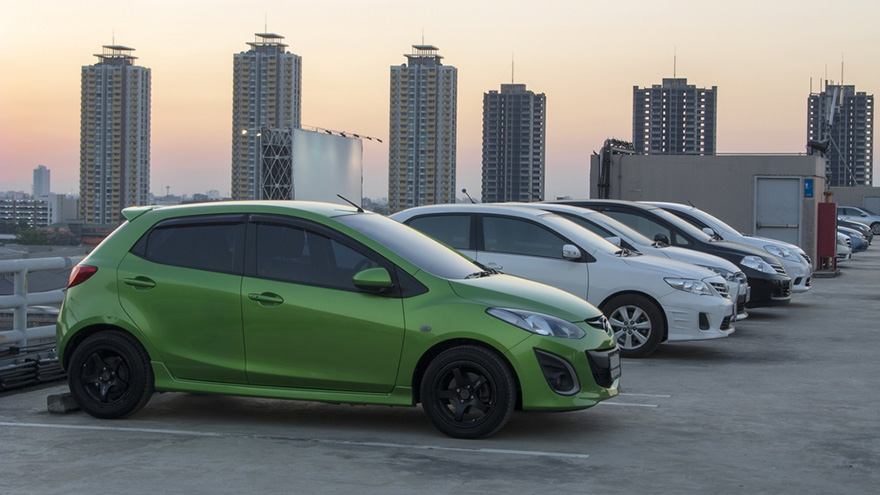Consumers get charged up about alt-fuel units

By subscribing, you agree to receive communications from Auto Remarketing and our partners in accordance with our Privacy Policy. We may share your information with select partners and sponsors who may contact you about their products and services. You may unsubscribe at any time.
CARY, N.C. –
As consumer perception changes about the vehicles’ capabilities and limitations, along with automakers pushing more models and options into the market, the volume of leased alternative-fuel vehicles is on the rise.
Swapalease.com shared data from its own site on Wednesday as well as analysis from Bloomberg New Energy Finance to shed light on trends about hybrids and electric vehicles (EV). Site officials indicated their analysis shows that alternative fuel vehicles now make up roughly 7.5 percent of the Swapalease.com marketplace, up from 5.5 percent back in 2015.
Swapalease pointed to Bloomberg’s efforts considering roughly about 31 percent of all new models rolling over the curb at franchised dealerships are attached to a lease contract. The Bloomberg report showed that as many as 80 percent of battery electric vehicles, and 55 percent of plug-in hybrids are leased.
Tesla, which doesn’t sell through a dealer network, isn’t included in these figures, according to Swapalease’s recap of the material.
Changing mood about these vehicles
So why are consumers gaining more interest in these vehicles while prices at the pump remain below $3 per gallon throughout most of the United States? They might be finding more concrete information about these models.
In December, Autolist.com released a study based on a user survey that shows buyers misunderstand EVs and the used EV market.
Subscribe to Auto Remarketing to stay informed and stay ahead.
By subscribing, you agree to receive communications from Auto Remarketing and our partners in accordance with our Privacy Policy. We may share your information with select partners and sponsors who may contact you about their products and services. You may unsubscribe at any time.
The Autolist.com study combined a user survey of 1,249 vehicle owners and market data from 17,738 used vehicles. Here are some key findings from the survey and assertions by Autolist.com:
• Public perception: The average buyer thinks a quality used electric vehicle costs $5,000 more than an equivalent gas vehicle.
• The facts: A used 2015 Nissan LEAF is cheaper than its gas class-competitors (the equivalent Honda Civic or Toyota Corolla).
• Public perception: Aside from vehicle range, reliability is the biggest concern of prospective EV buyers (41 percent of buyers are most concerned about EV).
• The Facts: According to user ratings, the 2015 Nissan LEAF and Chevrolet Volt have better than average reliability, with the Nissan LEAF scoring better than the Honda Civic and the Toyota Corolla.
The entire project by Autolist.com can be found online here.
What’s available to lease?
Turning back to the Swapalease analysis, the information showed that the Toyota Prius represented 47 percent — nearly half — of the entire alternative-fuel inventory on Swapalease.com at the end of 2017, down from 52 percent in 2015.
Tesla currently holds 23.3 percent of Swapalease.com alt-fuel vehicle inventory, followed by the Chevrolet Volt (14 percent) and the Nissan LEAF (11.2 percent).
Other manufacturers and models make up 5 percent of the alternative-fuel lineup on Swapalease.com.
Scot Hall, executive vice president of Swapalease, noted that Tesla has grown the most share of the alternative-fuel inventory on Swapalease.com between 2015 and the end of 2017, jumping 25 percent during that time.
The Prius, in comparison, has grown just 4.2 percent during the same time frame.
While the Chevy Volt has remained almost flat in growth during those two years, Hall pointed out that the addition of the Chevrolet Bolt has also significantly added to the Chevrolet alternative-fuel lineup..
“We fully expect alternative fuel vehicles to continue their growth in not only the Swapalease.com marketplace, but in leasing overall,” Hall said.
“Alternative-fuel technology is a microcosm of the rationale for leasing in that people realize the technology improves significantly in just a few years, therefore they want the ability to upgrade and change into a different vehicle during that time frame,” Hall said.
Prospects for alternative-fuel vehicles in 2018
The analyst team at Edmunds is thinking that 2018 is germinating to be the greenest year yet.
Edmunds analysts project that overall market share for green vehicles (EVs, plug-ins and traditional hybrids) will reach 4.4 percent in 2018, compared to an estimated 3.2 percent in 2017. Edmunds also predicts sales of plug-in vehicles will double in 2018 as compared to 2017, outselling traditional hybrids by the end of next year.
“Even if Tesla doesn’t meet its full production commitments for the Model 3 until midsummer, 2018 will still be a hallmark year for green vehicles,” said Jessica Caldwell, Edmunds executive director of industry analysis.
“The price of batteries is coming down, EV range is rising, and shoppers will have more choices than ever. However, the lower end of the EV market will feel pressure once federal tax credits start to wane toward the latter half of the year, which will give the first indication of how ready the segment is to stand on its own,” Caldwell continued.
Caldwell also touched on what the growth in alternative-fuel units means for what automakers might be doing well beyond this year.
“The rise in green car sales is really just a precursor to what OEMs have in the works for the autonomous vehicles promised for 2019 and 2020,” Caldwell said, adding, “2018 will be a year of right-sizing for the present while putting some of the critical building blocks in place for the future.”


